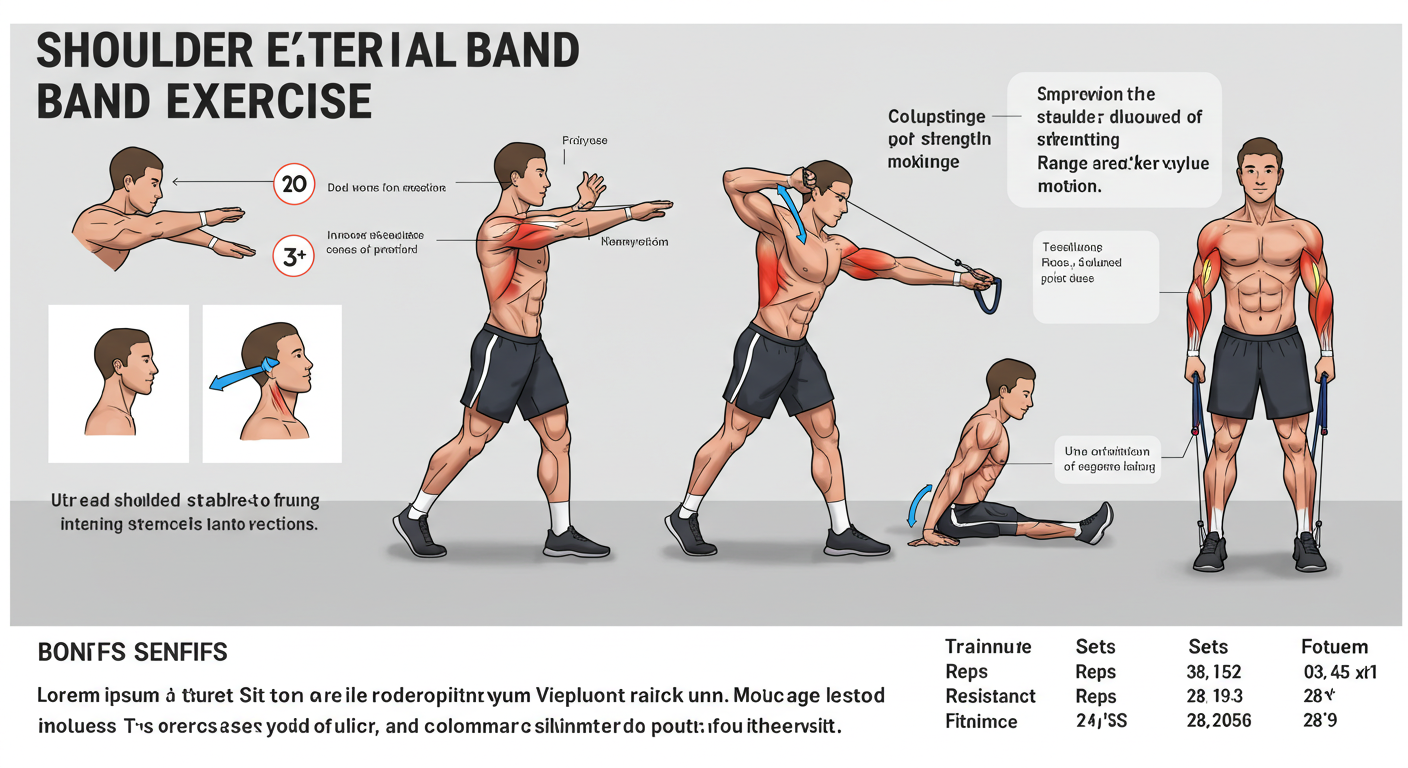The shoulder external rotation band exercise is one of the most effective ways to build shoulder stability, prevent injuries, and improve mobility. Often overlooked in strength training routines, this simple yet powerful movement targets the rotator cuff muscles, which play a crucial role in shoulder health. Whether you are an athlete, a fitness enthusiast, or someone recovering from shoulder issues, understanding how to use a shoulder external rotation band can significantly improve your performance and well-being.
What is the Shoulder External Rotation Band Exercise?
The shoulder external rotation band exercise involves using a resistance band to strengthen the external rotator muscles of the shoulder joint. These muscles help rotate the arm outward and stabilize the shoulder during lifting, throwing, or daily movements.
Unlike heavy compound lifts, this movement isolates small stabilizing muscles that are often neglected. Over time, weak rotator cuff muscles can lead to shoulder instability, pain, and even injury. By incorporating this simple band exercise, you can balance shoulder strength and reduce risks.
Benefits of Shoulder External Rotation Band Training
Performing the shoulder external rotation band exercise consistently provides several key benefits:
1. Strengthens the Rotator Cuff
The exercise directly targets the infraspinatus and teres minor — two crucial rotator cuff muscles that stabilize the shoulder.
2. Improves Posture
Weak external rotators often contribute to rounded shoulders. Training with the band helps counteract this by pulling the shoulders back into alignment.
3. Prevents Shoulder Injuries
Athletes, especially in baseball, tennis, and swimming, are prone to rotator cuff injuries. Strengthening these muscles with a shoulder external rotation band helps prevent overuse injuries.
4. Enhances Athletic Performance
Shoulder stability improves throwing, pressing, and lifting strength. This makes the exercise valuable for both weightlifters and sports players.
5. Supports Rehabilitation
For those recovering from shoulder injuries or surgeries, the band provides a controlled resistance level, making it safe for gradual rebuilding of strength.
How to Perform the Shoulder External Rotation Band Exercise
To get the best results, proper technique is essential when performing the shoulder external rotation band movement.
Step-by-Step Guide:
-
Setup: Attach the band to a stable anchor at elbow height.
-
Starting Position: Stand sideways to the anchor. Hold the band with the hand farthest from it, keeping your elbow bent at 90 degrees and close to your side.
-
Movement: Slowly pull the band away from your body, rotating your shoulder outward while keeping your elbow tucked in.
-
Control: Return to the starting position in a slow and controlled motion.
-
Reps: Perform 2–3 sets of 12–15 repetitions per side.
Tip: Do not allow your elbow to drift away from your side — this ensures proper activation of the external rotators.
Variations of the Shoulder External Rotation Band Exercise
There are several variations of the shoulder external rotation band exercise that allow you to target the muscles from different angles:
1. Standing External Rotation
The standard form performed in a standing position with elbow tucked.
2. Side-Lying Band Rotation
Lie on your side, anchor the band, and perform external rotations for increased isolation.
3. Overhead External Rotation
Attach the band above shoulder height and rotate externally with the arm elevated — useful for overhead athletes.
4. Double-Band Resistance
Use two bands to increase resistance gradually as strength improves.
Common Mistakes to Avoid
When performing the shoulder external rotation band exercise, watch out for these mistakes:
-
Using Excessive Resistance: Too much tension can shift the focus away from the rotator cuff and place stress on larger muscles.
-
Allowing Elbow Movement: If your elbow leaves your side, you reduce the effectiveness of the exercise.
-
Jerky Motions: Always perform slow, controlled movements to engage stabilizers properly.
-
Neglecting Both Sides: Balance is key. Train both shoulders equally, even if one feels weaker.
Programming Shoulder External Rotation Band Workouts
Incorporating the shoulder external rotation band exercise into your routine is simple and highly effective.
-
Warm-Up: Use light resistance before upper body workouts to activate the rotator cuff.
-
Rehabilitation: Perform daily with moderate reps and low resistance as recommended by a physiotherapist.
-
Strength Training: Add 2–3 sets at the end of your workout to balance shoulder development.
By programming the movement properly, you ensure long-term shoulder health and improved lifting performance.
Safety Tips for Shoulder External Rotation Band Training
To maximize safety and results with the shoulder external rotation band exercise:
-
Start with light resistance and progress gradually.
-
Maintain proper posture with a straight spine and neutral shoulders.
-
Breathe steadily; exhale during rotation and inhale on the return.
-
Stop immediately if you experience sharp pain.
Remember, the goal is stability and endurance, not heavy resistance.
Why Athletes Shouldn’t Ignore the Shoulder External Rotation Band
For athletes in sports like baseball, volleyball, swimming, or weightlifting, the is a game-changer. These sports require repetitive shoulder movements that put stress on the rotator cuff. Strengthening the external rotators improves performance while reducing downtime from injuries.
Professional strength coaches often program this exercise for their athletes because it enhances shoulder health without adding unnecessary bulk. It is an essential tool for both prevention and recovery.
Conclusion: The Power of the Shoulder External Rotation Band
The exercise may seem simple, but its impact on health is profound. It strengthens the rotator cuff, improves posture, prevents injuries, and supports athletic performance. Whether you’re recovering from an injury, preparing for a game, or looking to improve your lifting routine, this exercise deserves a permanent spot in your training program.
By making the part of your regular workout, you invest in long-term joint health, mobility, and strength — all of which are essential for peak performance in sports and daily life.

